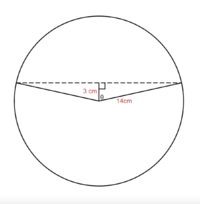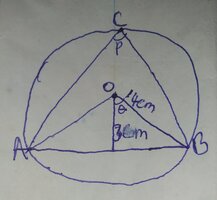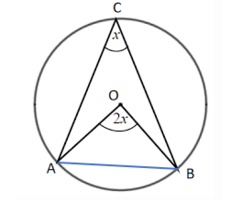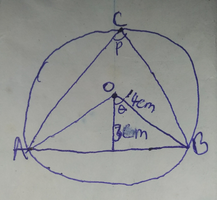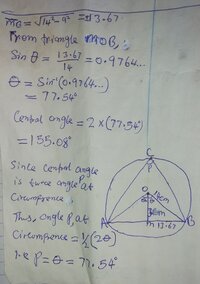A chord is 3 cm from the center of a circle of radius 14 cm. Calculate the angle subtended by the chord at the circumference of the circle?
I want solve this problem. But at first I want to know the relationship between the angle subtended by a chord at the circumference of a circle and the angle subtended by the same chord at the center of the same circle. I don't know does any such relationship exist?
I want solve this problem. But at first I want to know the relationship between the angle subtended by a chord at the circumference of a circle and the angle subtended by the same chord at the center of the same circle. I don't know does any such relationship exist?

